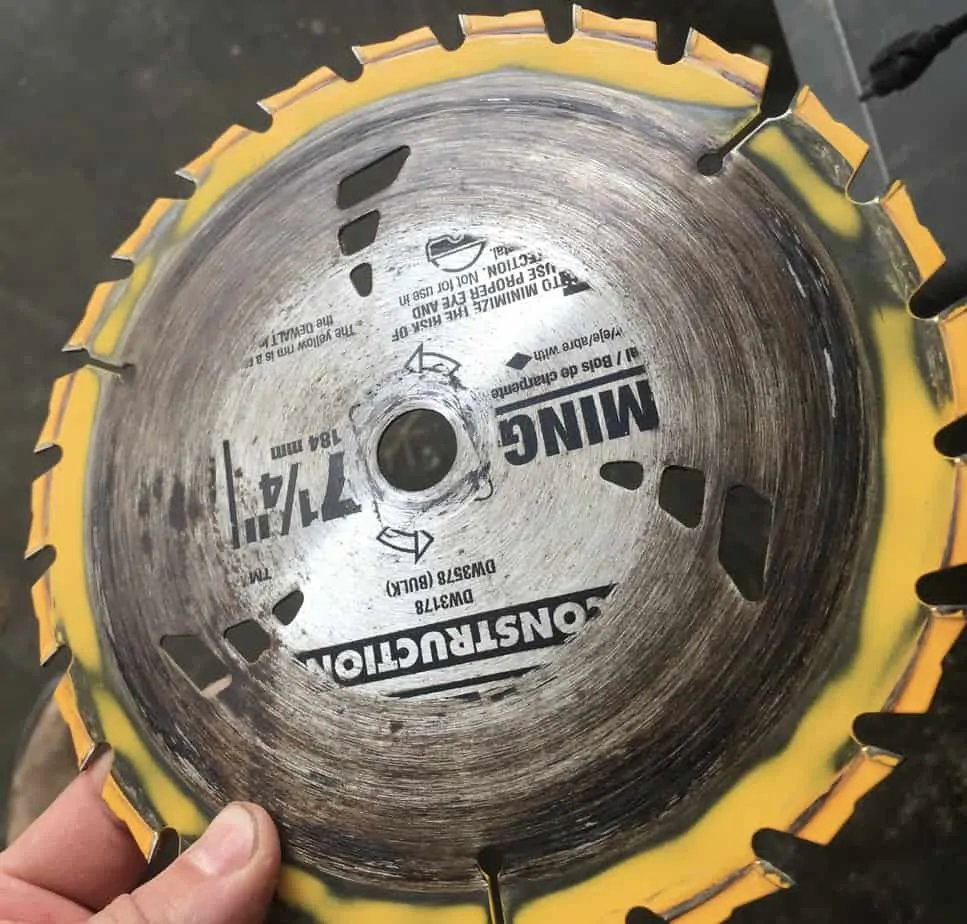This post will be a fairly short one because I intend to keep it simple and to the point. I will explain why you may need to clean your blade (as opposed to simply buying a new one) and the step by step instructions for doing so. I have included some detailed images down below, so if you are certain you need to clean your saw blade then go directly to the step by step instructions.
During the course of your woodworking and DIY projects you will most likely encounter your blades not cutting as well as before and find out that you are burning the wood and blade, among other things.
To find a good replacement blade (instead of cleaning), you should check out my post on the best blades here.
Obviously this is not an ideal situation. Sharp blades not only create better results, but they are safer and easier to work with. Dull and dirty blades tend to leave burn marks, cause more tear-out, and make it harder to get through a cut.
Is My Blade Dull Or Does It Need To Be Cleaned?
Some of the problems I described above can simply be due to the blade getting dull. You will know if this is the case usually by observing and asking these two questions:
- Is the blade is clean? i.e. no buildup of pitch (resin) or adhesives on and in between the teeth of the blade
- Have you used the blade frequently for a long time? (over a year generally)
I enjoy putting new blades on my equipment because it can be impressive the difference a new blade makes. A nice, sharp blade will slice through wood with little effort.
A blade that needs to be cleaned will have:
- build up of resin on and between the teeth
- burn marks on the blade
- difficulty cutting through most wood
Here are a couple examples (images below) of blades that have built up enough resin to cause burning. I’m not sure what caused it in these two examples, but sometimes it can be due to using the incorrect blade for the job or the wood having certain characteristics that cause it. If the wood is exceptionally moist it can definitely build up resin on the teeth and make it hard to cut.
Also, some types of plywood can cause this due to the adhesive used between the plys of the sheet.
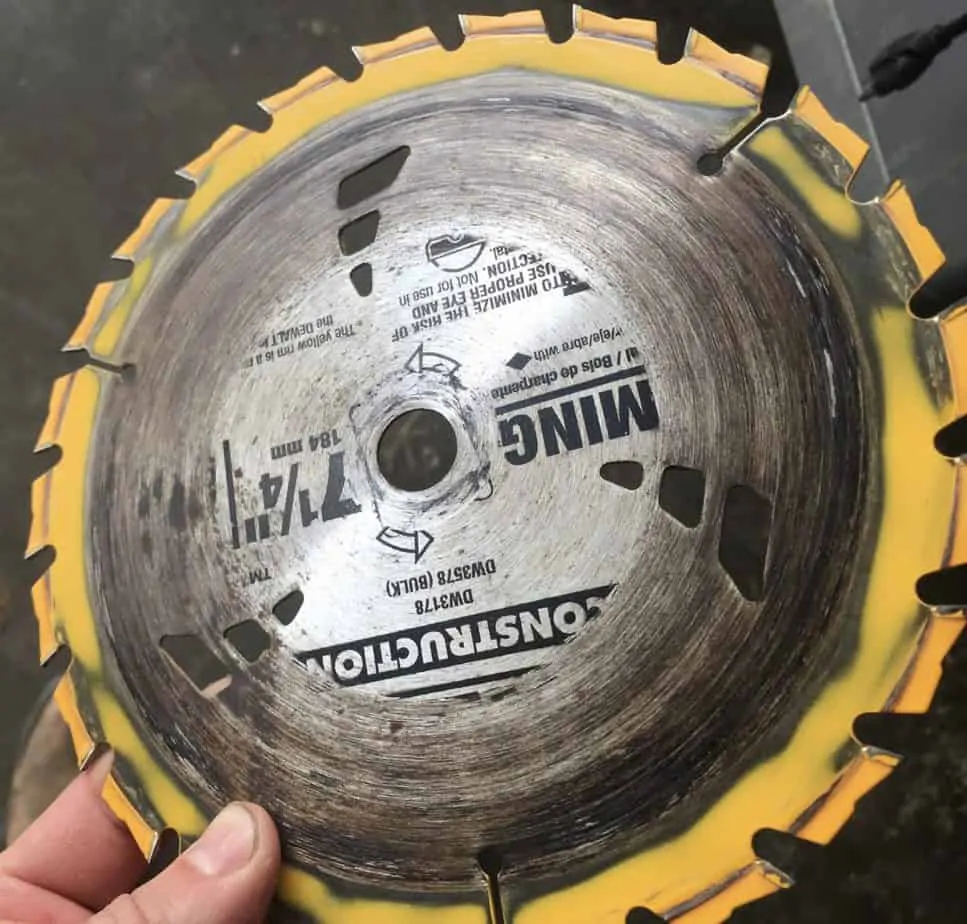
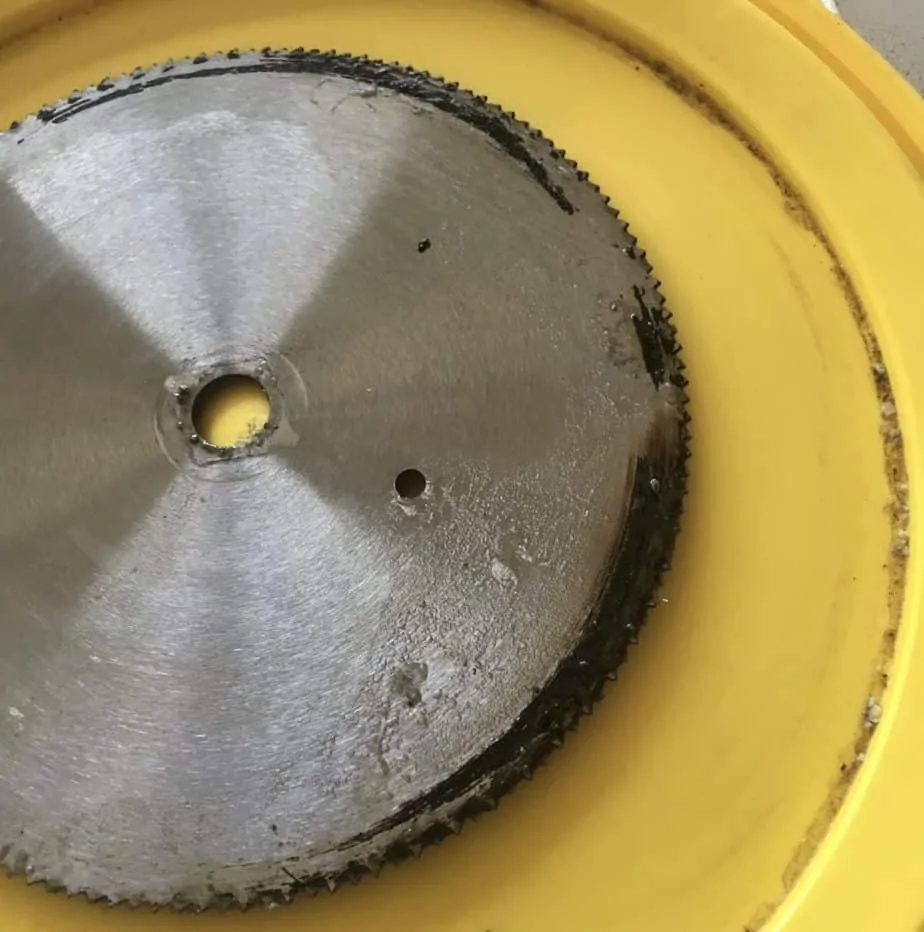
How to Clean Resin (Pitch) and Burn Marks Off Saw Blade
The first step is to get the materials and cleaner needed. It is possible to clean the blade with cleaners/degreasers like Simple Green or oven cleaner.
I like to use a cleaner that is specifically made for this job. I have had great results using CMT Blade and Bit Cleaner. The one I got comes in a spray bottle, but they also sell larger gallon size jugs (you’d need to be doing some heavy duty cleaning).
So you need:
- Cleaner
- Small Wire Brush
- Plastic 5 Gallon Bucket Lid (or other container to hold saw blade)
The small wire brushes and bucket lids can almost always be found in hardware stores, or online of course.
Cleaning Process
Spray the cleaner liberally over the saw blade. Although both sides will need to be cleaned you can stick to one side for now. Let it soak for a little while, I’d say at least 5 minutes – more is better.
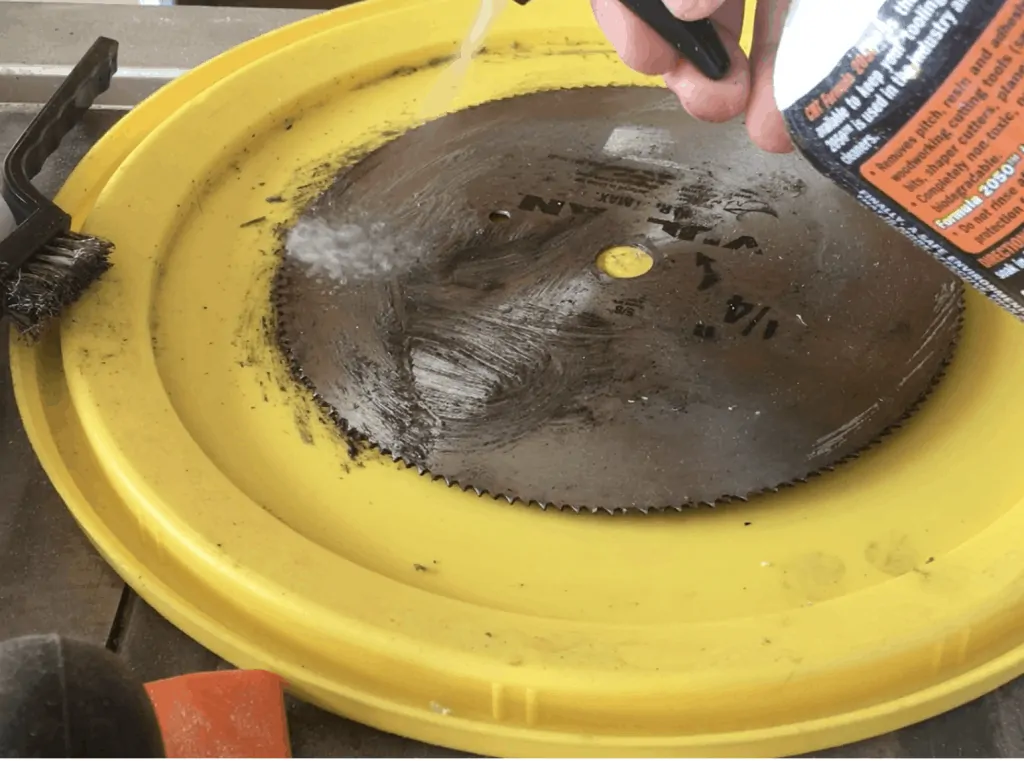
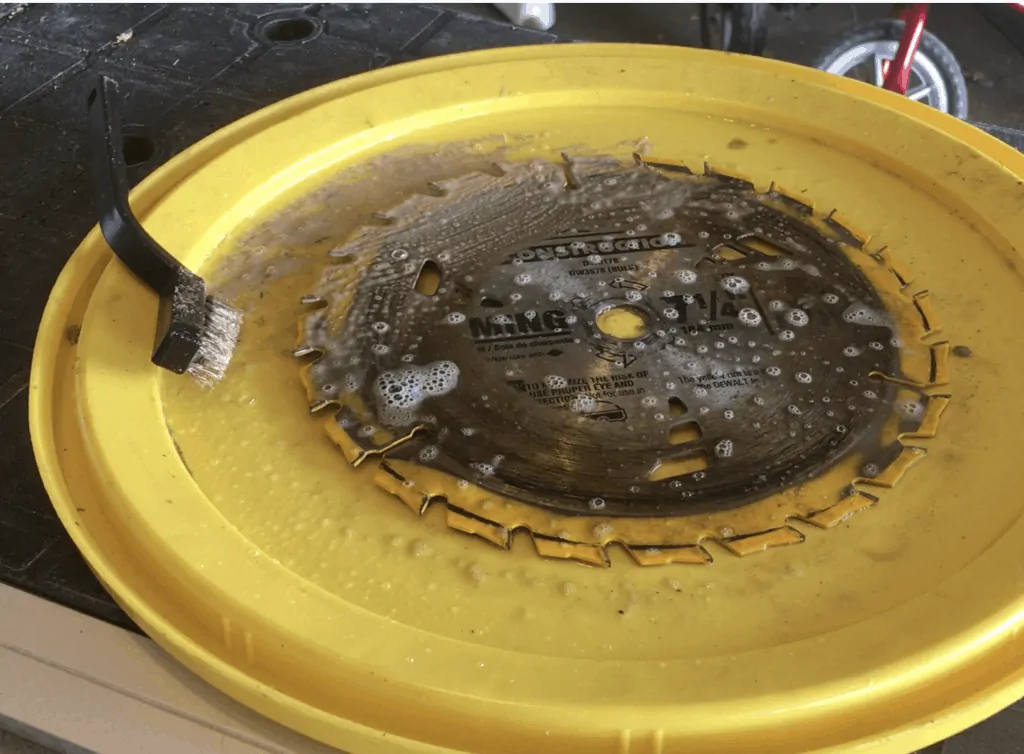
After soaking, scrub the blade with the wire brush. If there is a good bit of resin on the teeth it may not all come clean on this first pass. Be careful with the blade – it is probably a good idea to wear some tough leather gloves at this stage (although I didn’t but that was probably dumb).
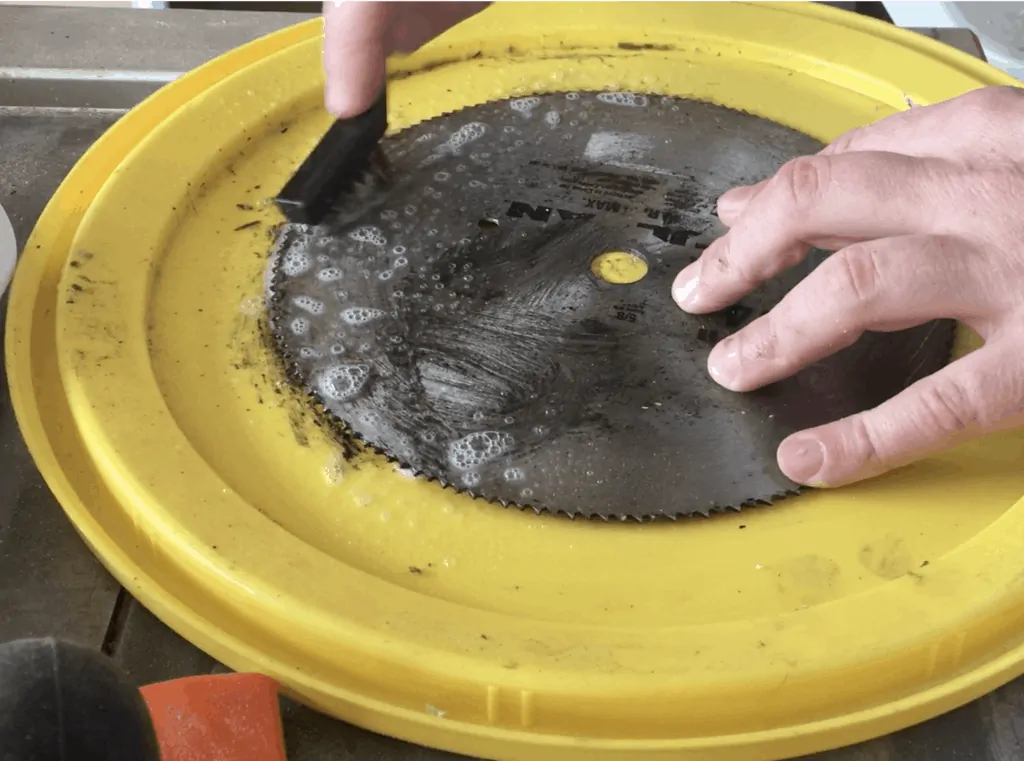
After a good scrub, take a towel and wipe up all of the mess on the blade. At this point you will know if it is nice and clean or if you need to continue the process.
It may not be possible to get the blade perfectly clean, but it should be pretty close. If it is difficult to get it clean to an acceptable level, then you have probably waited too late to clean it, or the damage to it is simply irreparable.
Here are the results of my efforts:
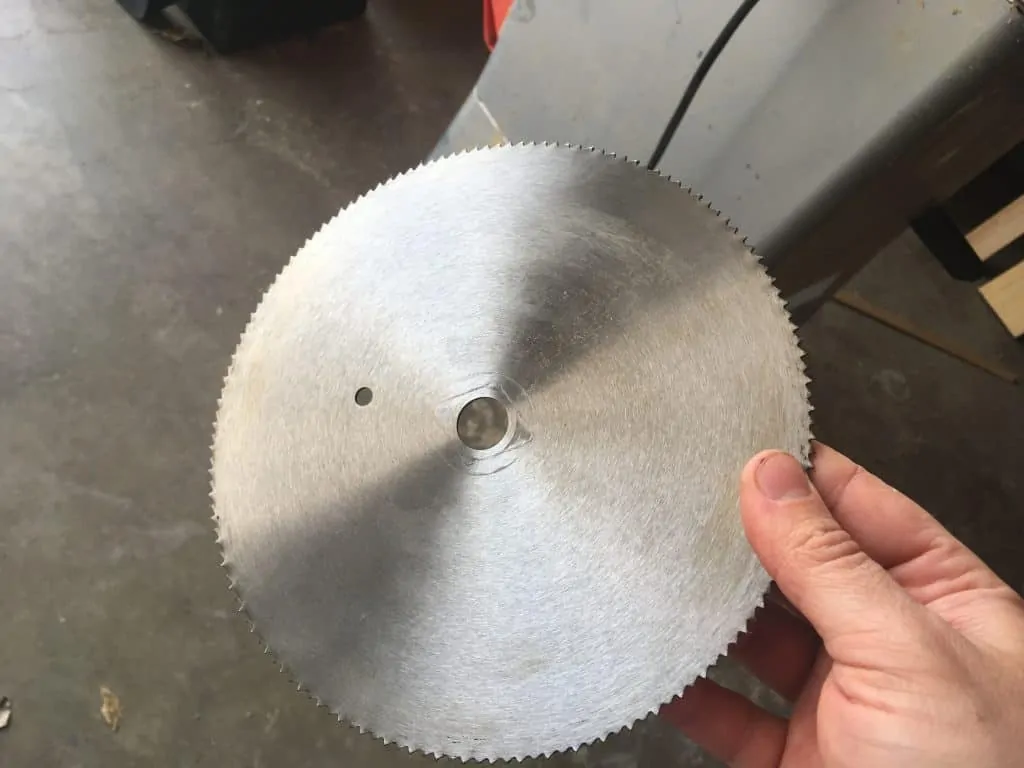
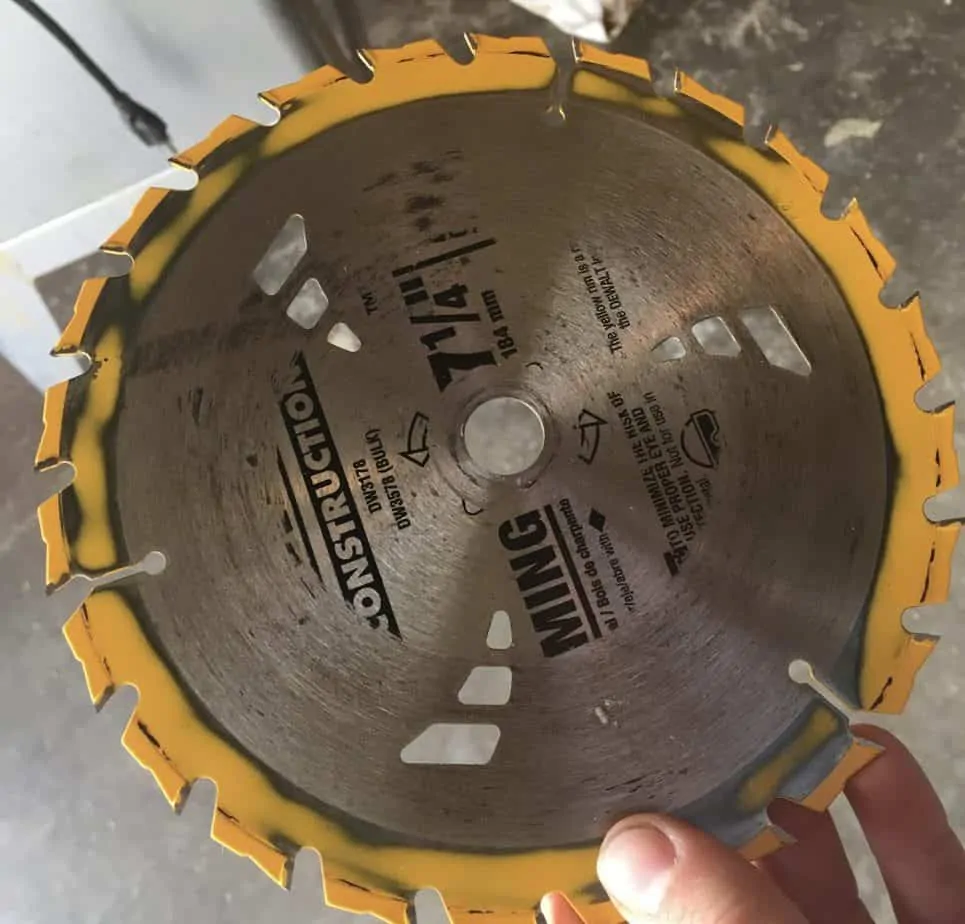
These blades worked a lot better than before, although the DeWalt one above had to be replaced not too long afterwards anyway because it was becoming generally dull.
The other blade with all the teeth was designed for plywood, but it didn’t seem to work very well when I used it for that purpose. I used it on some baltic birch plywood, and I assume the baltic birch is well made with few gaps so the blade became jammed up quickly from the adhesive used in the plywood. I will have to try it again soon and see if there is a better strategy.
Conclusion
Cleaning saw blades is a good way to prolong the life of your tools and keep your woodshop in a good working condition.
I suggest cleaning saw blades based upon how often you use them. If it is infrequent then twice a year will probably be enough, or if you do more steady consistent work I would say every 40 hours of shop time. You can take that time and adjust it based upon what you see with your own blades.
